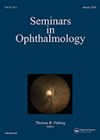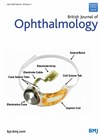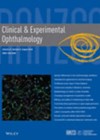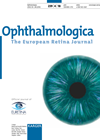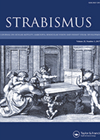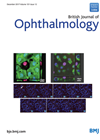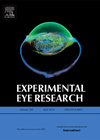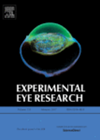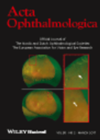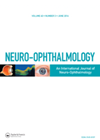
Journal Reviews
Intravitreal Ziv-Aflibercept: safety analysis
Ziv-Aflibercept (Zaltrap; Sanofi-Aventis U.S LLS, Bridgewater, NJ) was originally introduced as an intravenous formulation for metastatic colorectal cancer. The adoption of Ziv-Aflibercept in ophthalmic practice was similar to bevacizumab, and reports have previously examined one to two year visual outcomes...
Anatomical and functional outcomes following switching from aflibercept to ranibizumab in NARMD
This is a six-month, prospective, single-arm study in the UK and Germany. A total of 100 patients were enrolled (one in the primary failure group, 99 in the suboptimal treatment response group), treated three-monthly intravitreal ranibizumab injections (0.5mg), and then...
Prognostic factors for visual acuity in patients with LHON after gene therapy
This retrospective study investigates prognostic factors affecting the visual acuity after a single intravitreal injection of rAAV2-ND4 gene therapy in 53 patients with Leber’s hereditary optic neuropathy (LHON) with mutation at site 11 778. Patients were reviewed one and three...
RPE atrophy onset in treated nAMD
In this study the authors aim to evaluate the role of various factors for the development of retinal pigment epithelium (RPE) atrophy over a period of five years in patients with nAMD. Fifty-two newly diagnosed nAMD patients with complete absence...
Genetic profiles of primary strabismus
The authors explore the pedigree analysis of familial cases of primary concomitant strabismus (PCS) to unravel the genetic determinants of this strabismus. Of 2301 cases of PCS, 39 (1.7%) had familial clustering. This study recruited 18 families with esotropia and...
Aberrant regeneration rates following traumatic oculomotor palsy
Traumatic oculomotor nerve palsies can result in aberrant regeneration / synkinesis which impairs normal facial function. In this paper, the authors retrospectively reviewed the records of 16 patients with traumatic oculomotor nerve palsies who were treated with or without steroids....
Using a pupillometer to confirm presence of RAPD in post stroke homonymous hemianopia
It has been reported that relative afferent pupillary defects (RAPDs) may be present in patients with occipital lobe lesions. However, a small contralateral RAPD due to a difference in the crossed and uncrossed fibres can be difficult to detect using...
PRN Ranibizumab verses continuous aflibercept in UK clinical practice
This was a multicentre (21 UK hospitals), national EMR study on treatment naïve nAMD eyes, undergoing predominantly as needed (PRN) Ranibizumab or continuous (fixed or treat and extend - (F/TE)) Aflibercept (Af). The primary outcome was change in vision at...
CD40L activation of human RPE cells
Age-related macular degeneration (AMD) is the leading cause of reduced visual acuity in the elderly worldwide. The risk factors involved in AMD include smoking and diet, while genetics have been shown to have a significant role. Recently a link between...
Importing iron to the retina
In the retina, iron is particularly critical for the visual phototransduction cascade. In the retinal pigment epithelium (RPE), RPE65 activity leads to 11-cis-retinaldehyde, the photosensitive component of rhodopsin production and iron containing enzymes are necessary for disc replacement in photoreceptor...
How many injections in nAMD: ranibizumab vs. aflibercept
Intravitreal anti-VEGF injections make up a large proportion of the workload in ophthalmology clinics. Since the introduction of aflibercept with eight weekly injections there has been an option to use a treatment which may require less treatment, with potential cost...
Systematic review on vergence neural pathways
A full systematic review of the literature was carried out by the authors, to identify literature available on vergence neural pathways and associated disorders. The review included articles related to vergence neural pathways, along with articles that discussed the anatomy,...

